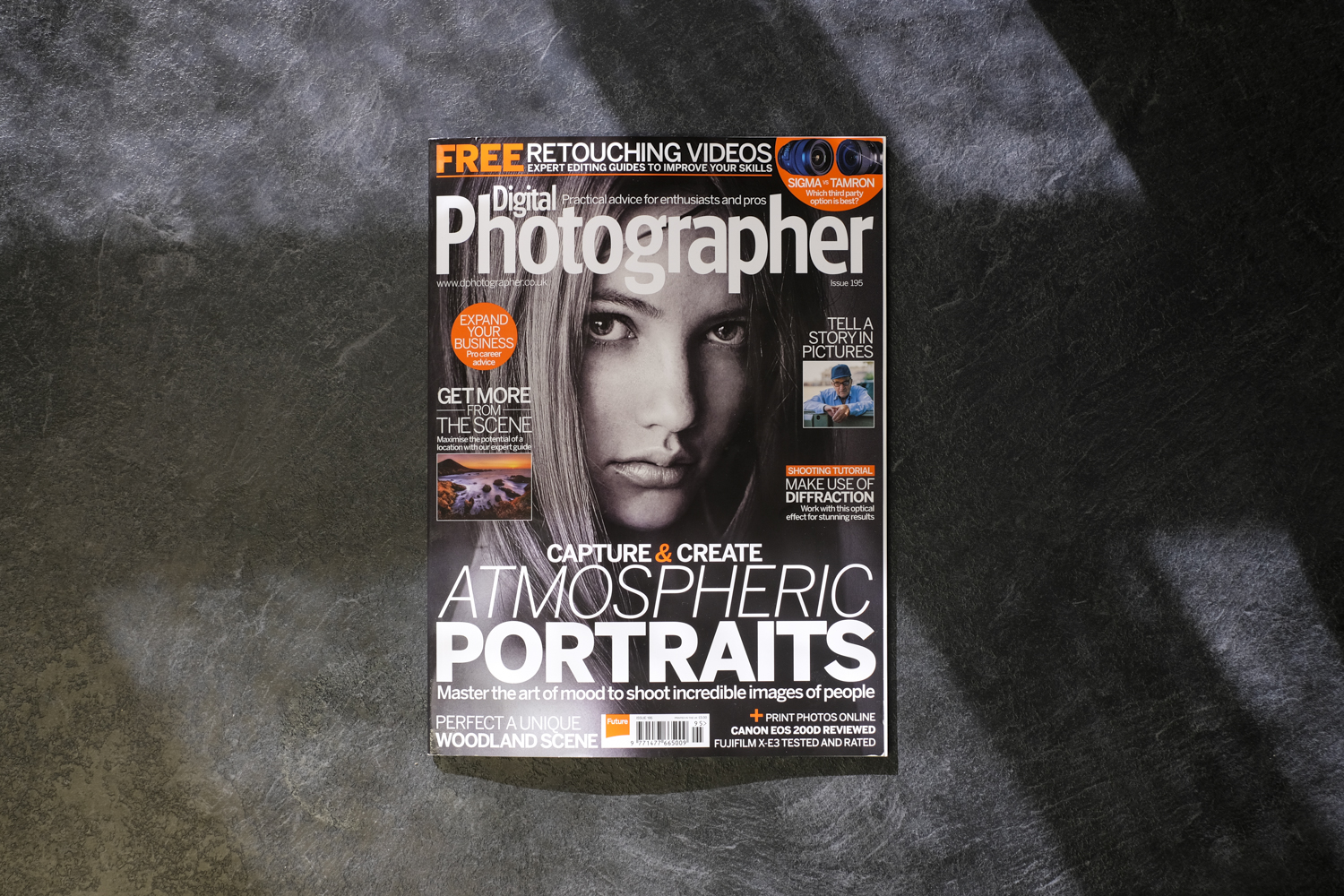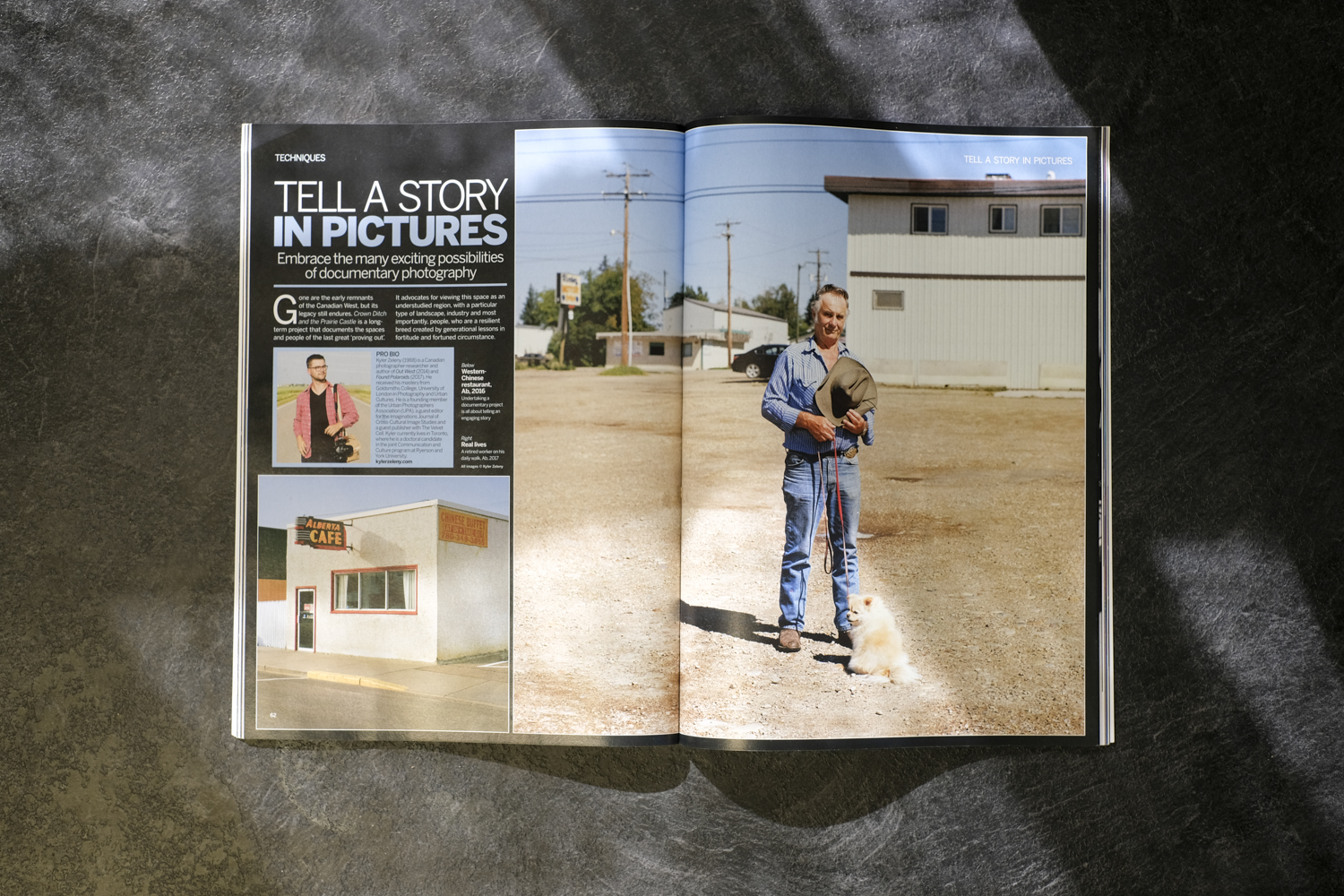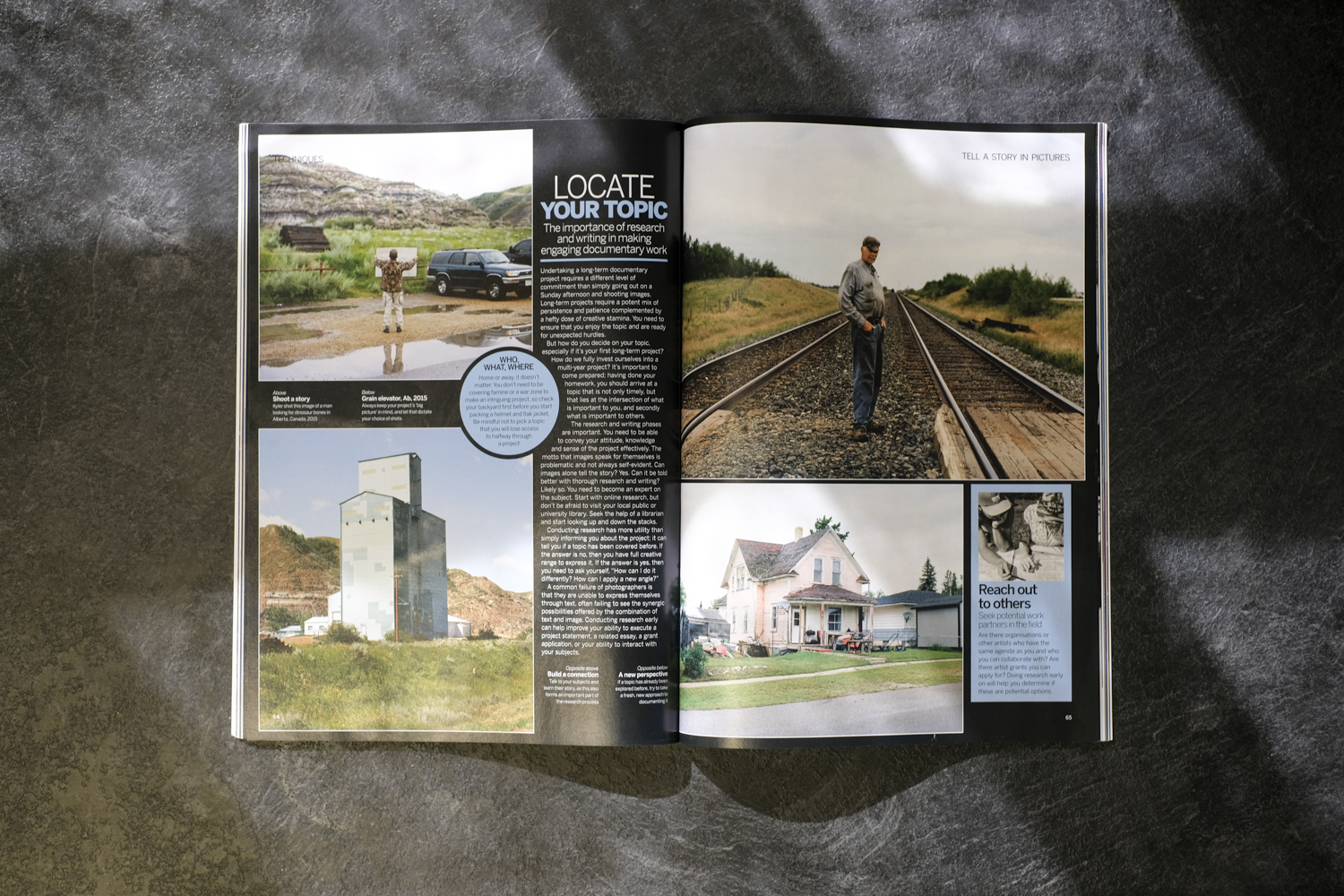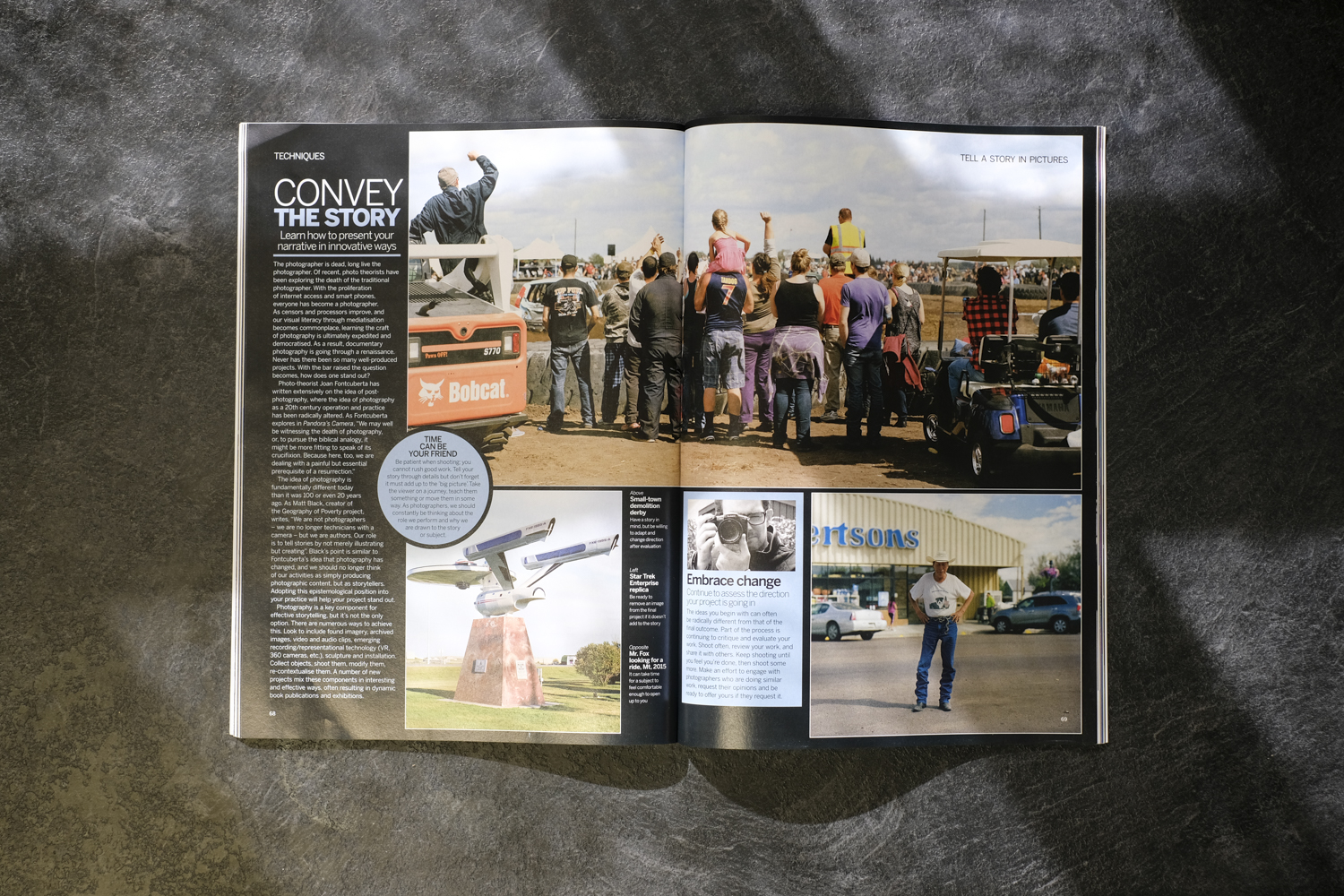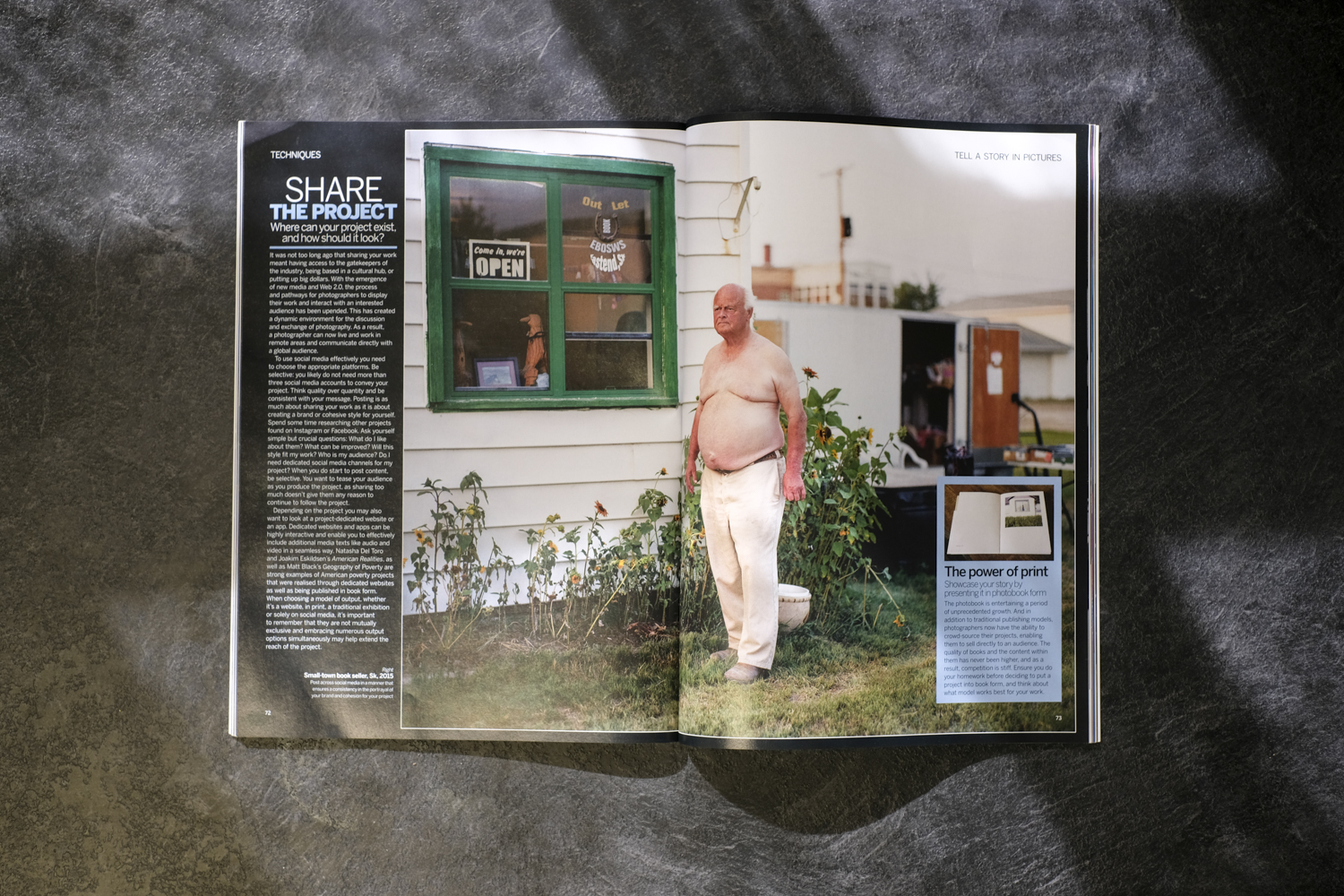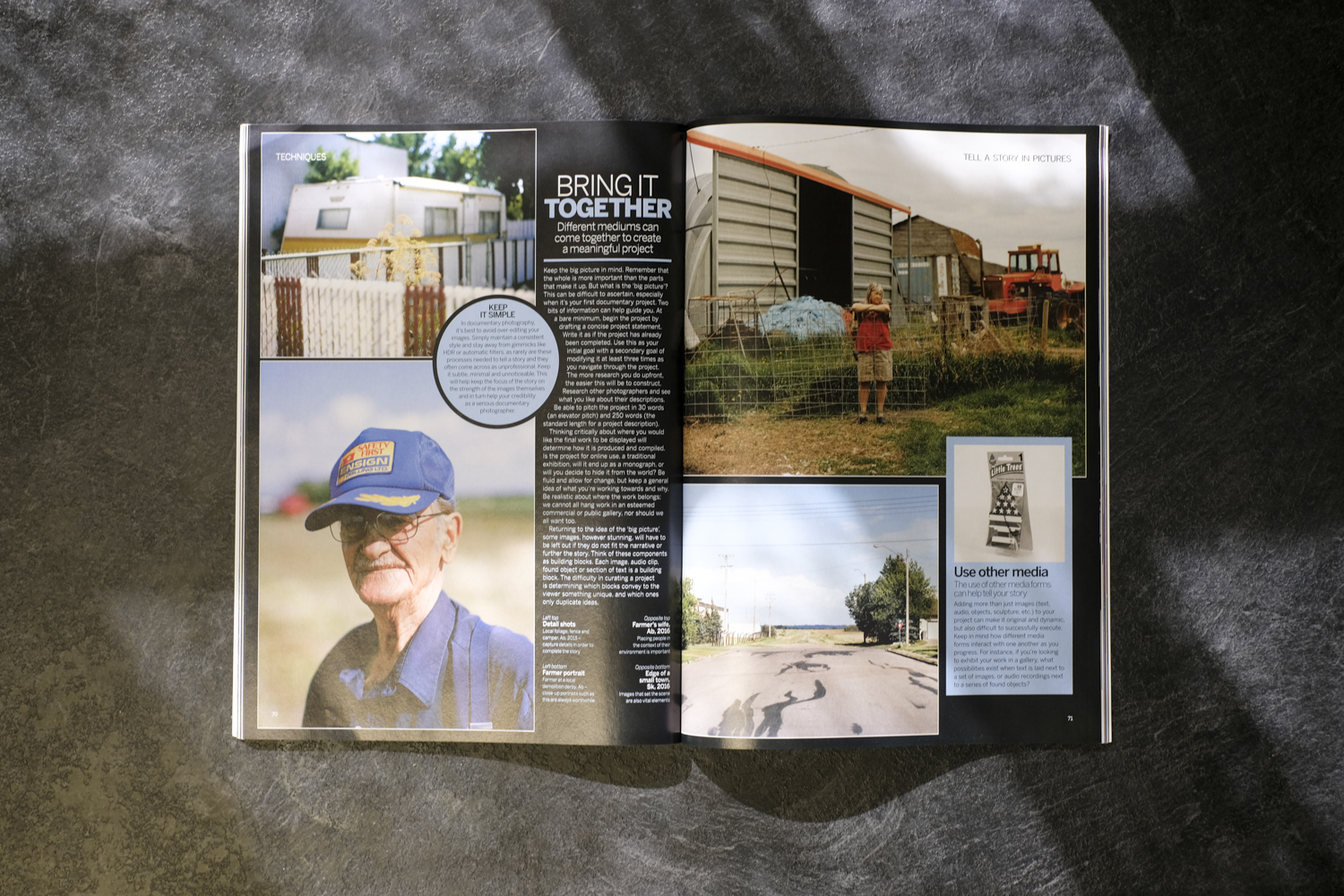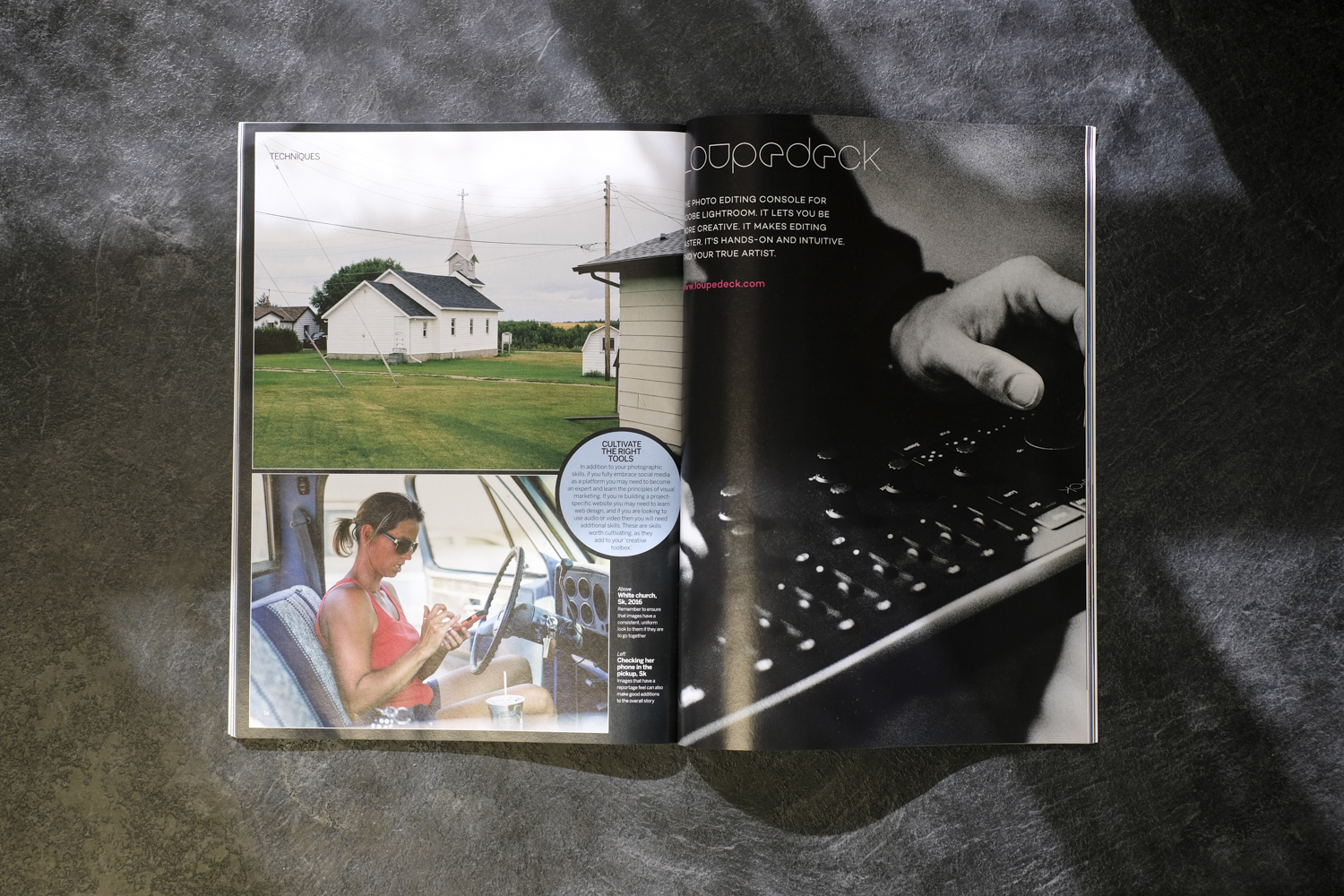TELL A STORY IN PICTURES: Embracing the Possibilities of Documentary Photography
Digital Photographer Magazine – Issue 195
I wrote an article on how to go about starting a documentary project. For a number of emerging photographers this is a critical juncture as they journey from the hobbyist to the more serious, playful and develped realms of the medium.
(Excerpts…)
Connecting with your Subject Matter – Shooting skills for doing documentary work
Be authentic, the more honest you are with your intentions and the more genuine interest you show in your topic the more willing they will be to opening up. This next piece of advice is very simple but is often overlooked; don’t simply converse with your subjects but enter into a dialogue with them. Think about it as talking with them rather to them. And remember, not all encounters must result in a photograph or a hot tip. Sometimes you have to spend time discussing nothing to learn something. You might have to discuss the weather before you can ask serious questions. Continue to allow time for an introduction and for you to become comfortable with the subject and the subject with you.
Put yourself into the work. The closer you get and the more attachment you become the subject the better the work will be. We often forget that the camera can be a barrier, a device that creates distance, try to limit the distance by being present in the work. Doing this will help you remember that you’re simply one human trying to connect to other humans. Make this your mantra. It will help you avoid the Othering process that can occur when you photograph. Avoid fetishizing their position as this can lead to exploitation. It is difficult to tell when this happens so its important to keep it in mind as you continue your project.
Telling the Story – How to tell your story in innovative ways
The photographer is dead, long live the photographer. Of recent, photo-theorists been exploring the death of the traditional photographer. With the proliferation of internet access and smart phones, everyone has become a photographer. As censors and processors improve, and our visual literacy through mediatization becomes commonplace, learning the craft of photography is ultimately expedited and democratized. As a result, documentary photography is going through a renaissance. Never has there been so many well produced projects. With the bar raised the question becomes how does one stand out?
Photo-theorist Joan Foncuberta has written extensively on the idea of post-photography where the idea of photography as a twentieth century operation and practice has been radically altered. As Fontcuberta explores in Pandora’s Camera, “we may well be witnessing the death of photography, or, to pursue the biblical analogy, it might be more fitting to speak of its crucifixion. Because here, too, we are dealing with a painful but essential prerequisite of a resurrection.”
The idea of photography is fundamentally different today than it was 100 or even 20 years ago. As Matt Black, creator of the Geography of Poverty project writes, “we are not photographers – we are no longer technicians with a camera – but we are authors. Our role is to tell stories by not merely illustrating but creating”. Black’s point is similar to Foncuberta’s idea, photography has changed, we should no longer think of our activities as simply producing photographic content, but as storytellers. Adopting this epistemological position into your practice will help your project stand out.
Photography is a key component for effective storytelling, but its not the only option. There are numerous ways to achieve this. Look to include found imagery, archived images, video and audio clips, emerging recording/representational technology (VR, 360 cameras, etc.), sculpture and installation. Collect objects, shoot them, modify them, re-contextualize them. A number of new projects mix these components in interesting and effective ways, often resulting in dynamic book publications and exhibitions.
To get on board with Digital Photographer Magazine click here.

